FAQ – Food Preservation
go.ncsu.edu/readext?733178
en Español / em Português
El inglés es el idioma de control de esta página. En la medida en que haya algún conflicto entre la traducción al inglés y la traducción, el inglés prevalece.
Al hacer clic en el enlace de traducción se activa un servicio de traducción gratuito para convertir la página al español. Al igual que con cualquier traducción por Internet, la conversión no es sensible al contexto y puede que no traduzca el texto en su significado original. NC State Extension no garantiza la exactitud del texto traducido. Por favor, tenga en cuenta que algunas aplicaciones y/o servicios pueden no funcionar como se espera cuando se traducen.
Português
Inglês é o idioma de controle desta página. Na medida que haja algum conflito entre o texto original em Inglês e a tradução, o Inglês prevalece.
Ao clicar no link de tradução, um serviço gratuito de tradução será ativado para converter a página para o Português. Como em qualquer tradução pela internet, a conversão não é sensivel ao contexto e pode não ocorrer a tradução para o significado orginal. O serviço de Extensão da Carolina do Norte (NC State Extension) não garante a exatidão do texto traduzido. Por favor, observe que algumas funções ou serviços podem não funcionar como esperado após a tradução.
English
English is the controlling language of this page. To the extent there is any conflict between the English text and the translation, English controls.
Clicking on the translation link activates a free translation service to convert the page to Spanish. As with any Internet translation, the conversion is not context-sensitive and may not translate the text to its original meaning. NC State Extension does not guarantee the accuracy of the translated text. Please note that some applications and/or services may not function as expected when translated.
Collapse ▲The Cooperative Extension Service across the nation has always been a reliable source of food preservation instruction and a place where consumers could go to get their specific questions answered. We here at the N.C. Cooperative Extension, Brunswick County Center are no exception.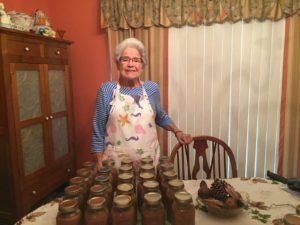
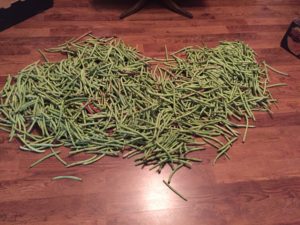
One of the recent questions to our office was about field peas. Brenda Clemmons inquired about the processing time for fresh field peas. These peas DO need to be processed using a pressure canner. To prepare: shell and wash the peas. Then place in a pot on top of stove, cover with boiling water and boil for three minutes. Pack the peas loosely into hot canning jars and then fill the jars with the boiling hot cooking liquid. An important thing to remember when canning starchy food like peas is to be sure to leave lots of headspace (1 1/2 inches) in the jars and also don’t press down or over pack the jars as the peas do swell during processing. Quarts should be processed for 50 minutes at 11 pounds of pressure with a dial gauge pressure canner or 10 pounds with a weighted gauge pressure canner. This recommendation is also good for fresh black-eyed peas, crowder peas, lima beans, butter beans, pinto beans, and soybeans. For complete instructions go to the National Center for Home Food Preservation.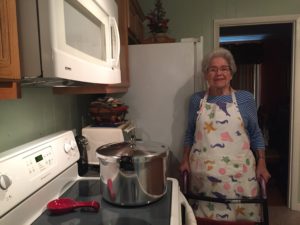

Dried peas and beans can be soaked and then pressure canned. This is a slightly different process and requires more time, so don’t get these two products confused. Also, green peas and sweet peas are different vegetables, too, and have their own procedures.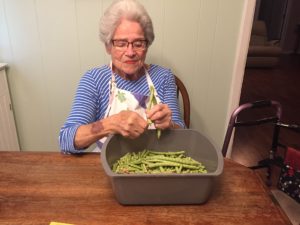
Clemmons shared later that they were successful in canning 34 quarts (so far). Since it takes at least five pounds of fresh peas in-the-pod to get seven quarts of canned peas, the shelling was a major family project. The whole family joined in including her mother, Elizabeth Rabon Mercer, her sisters Beverly and Bonnie Mercer with their mother’s twin sisters, Cheryl Mintz, and Gayle Sullivan. They said this job was truly a labor of love. Clemmons reported that “this was our first time ever using the pressure canner. We were very surprised, at how simple it was to use once we figured it out.” Elizabeth, who will be 89 years young this week, says “we’re never too old to try new things.”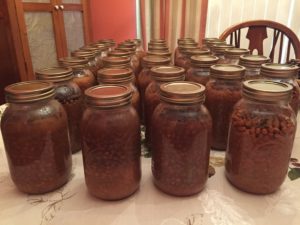
Happy Birthday 89th birthday to Elizabeth on September 18 – never too old to be in the kitchen.
Source: Cheryle Jones Syracuse, FCS Staff Member, cheryle_syracuse@ncsu.edu



